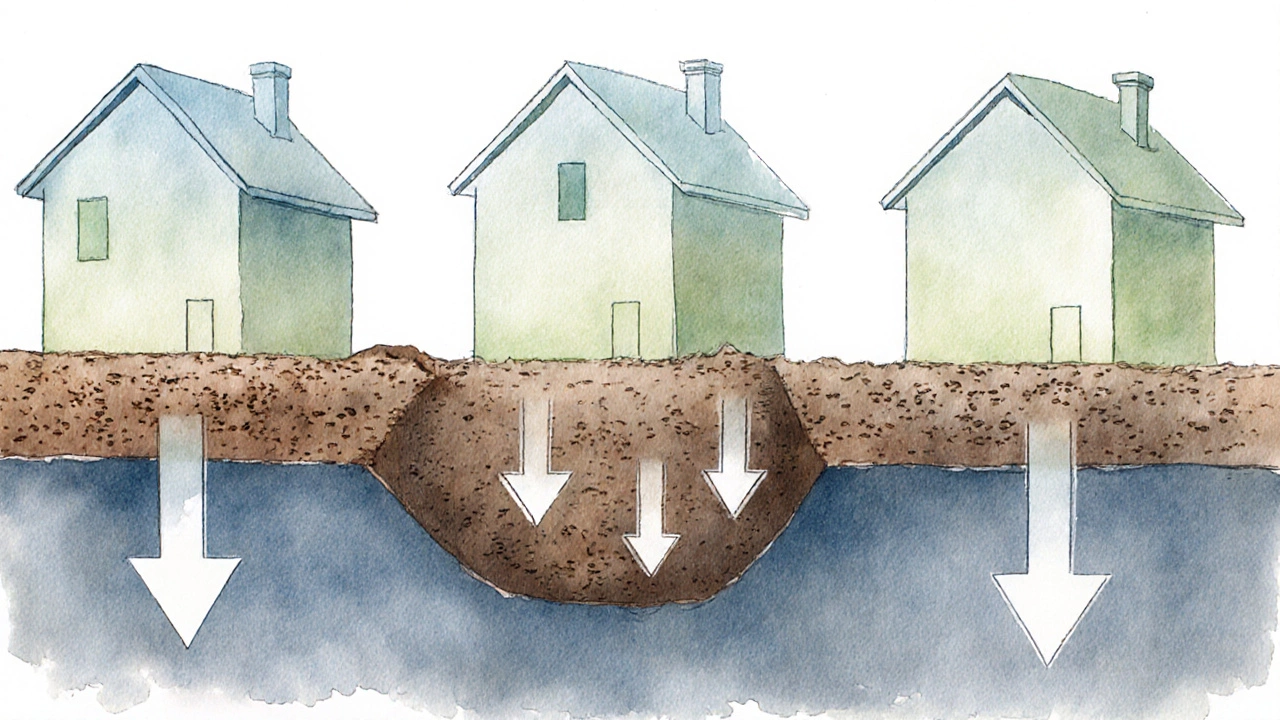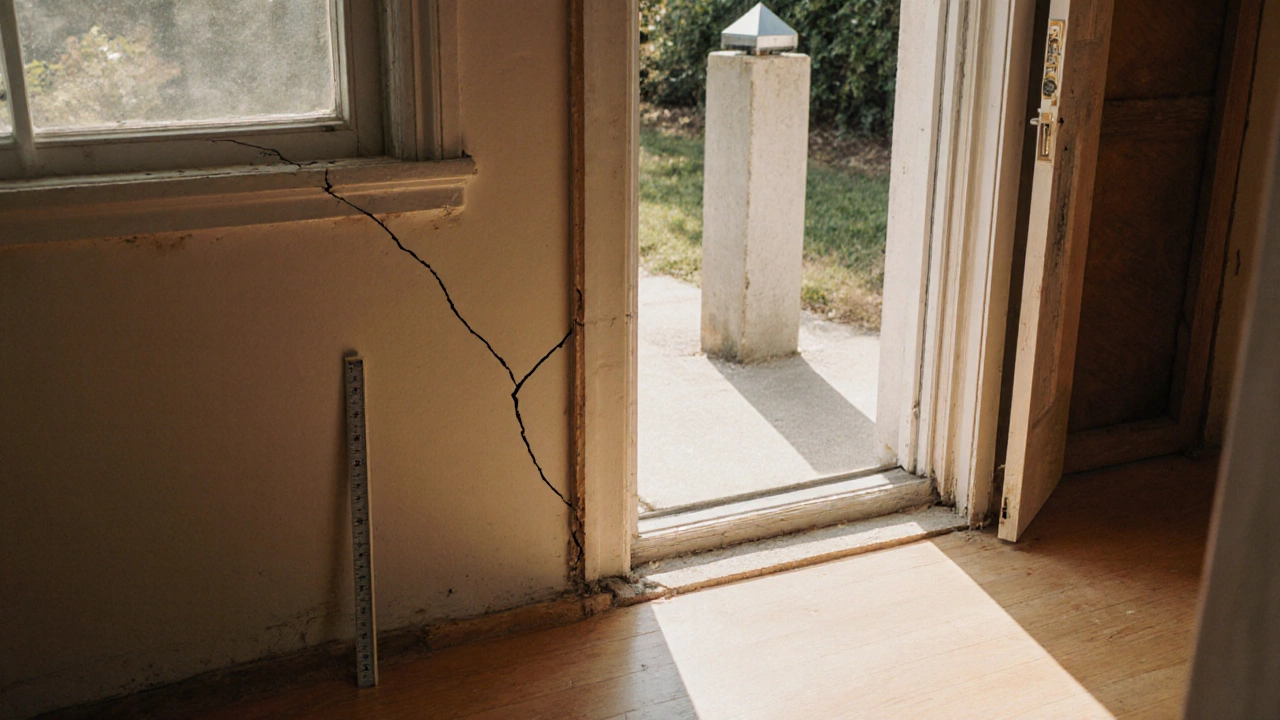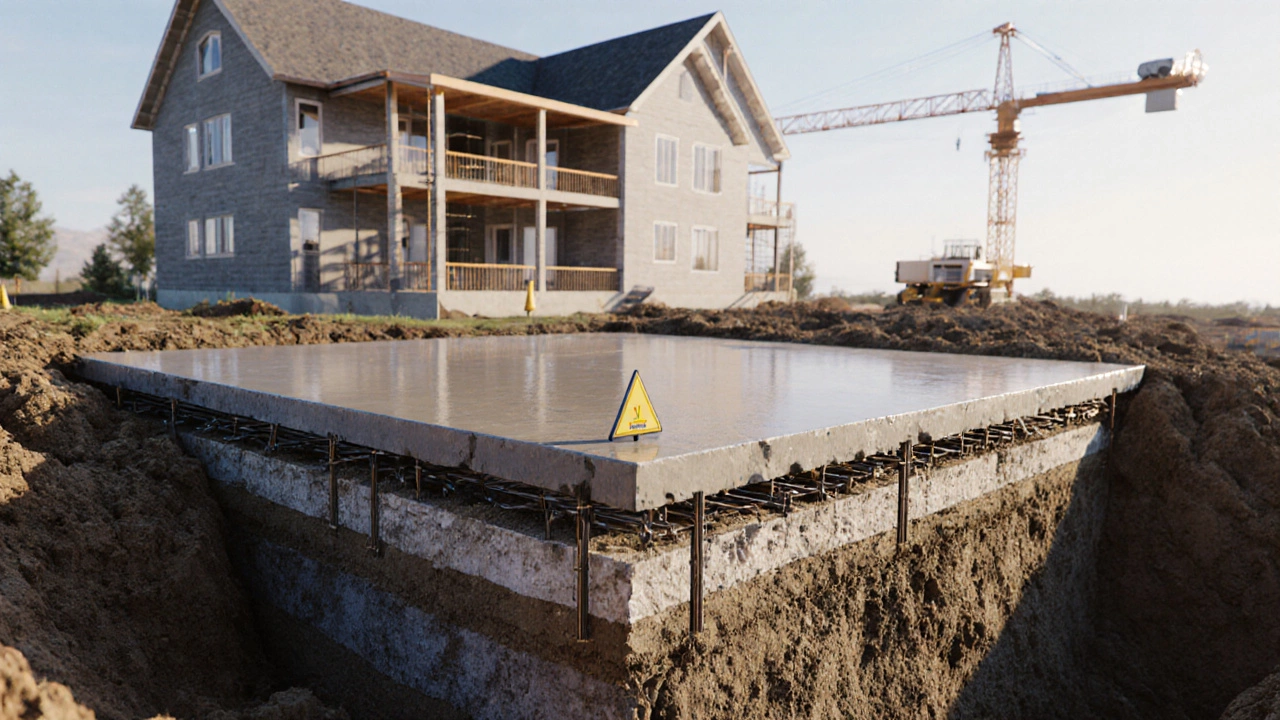Building Settlement Estimator
Settlement Parameters
Settlement Results
Enter your parameters to see settlement estimates.
Risk Assessment
When a fresh structure rises from the ground, it isn’t instantly stable. The concrete, steel, and soil all need a chance to find a new equilibrium. Knowing building settlement time helps owners avoid surprise cracks, plan interior finishes, and keep engineers happy.
What is building settlement?
Building settlement is the gradual downward movement of a structure as the soil and foundation adjust to the imposed loads. It’s a natural process that starts as soon as footings are poured and can continue for months or even years.
Settlement isn’t the same as a structural failure. Small, uniform movements are expected and usually harmless. When the movement is uneven, cracks can appear in walls, doors may jam, and floor levels can tilt.
Typical timeframes - the settlement curve
The classic settlement curve has three stages:
- Initial rapid settlement - the first 1‑3 months. Most of the weight is transferred to the soil, and the most noticeable movement occurs.
- Secondary slower settlement - months 4‑12. The rate drops but still accounts for 20‑30% of total movement.
- Long‑term residual settlement - after the first year, extending up to 3‑5 years for some sites. Movements become minimal, often less than a millimeter per year.
In practice, a typical single‑family house on a well‑compacted slab will settle 5‑15mm within the first year and another 2‑5mm over the next two years.
Key factors that influence how long settlement lasts
Every project is a mix of variables. The most common drivers are:
- Foundation type - slab‑on‑grade, crawlspace, or full basement each interact differently with the ground.
- Soil type - clay shrinks and swells, sand drains quickly, silt can compress under load.
- Moisture content - seasonal rain, irrigation, or dry periods cause the soil to expand or contract.
- Load‑bearing walls and interior partitions - extra points of concentration speed up local settlement.
- Construction timeline - rapid construction without proper curing can lock in higher initial stresses.
- Structural engineer involvement - good design and proper settlement joints mitigate uneven movement.
Understanding these helps you predict whether a project will settle in weeks, months, or years.

How to monitor settlement on a new build
Proactive monitoring catches problems early. Here are three simple methods:
- Surveyor’s benchmarks - a licensed surveyor installs reference pins or a laser level before construction. Periodic readings give a precise millimetre‑scale record.
- Crack gauges - thin mechanical gauges placed over critical wall joints show expansion in real time. A change of 0.1mm per month usually warrants a closer look.
- Digital tilt sensors - affordable IoT devices can be stuck to floors or walls, feeding data to a smartphone app. Alerts trigger when tilt exceeds 0.2%.
Document every reading, date, and weather condition. This log becomes invaluable if warranty claims arise later.
Warning signs that settlement may be excessive
Even with monitoring, noticing visual cues is essential:
- Diagonal cracks radiating from window or door frames.
- Doors and windows that stick in one direction but open freely the other way.
- Uneven floor finishes - tile or hardwood that lifts on one side.
- Visible gaps between the foundation wall and floor joists.
If you spot more than one of these within the first six months, call a structural engineer for a detailed assessment.
Mitigation strategies - what you can do now
Good design can reduce settlement dramatically. Consider these actions during the planning phase:
- Use a geotechnical soil report to select appropriate footing size and depth.
- Install proper drainage - perimeter French drains, vapor barriers, and grading that directs water away from the foundation.
- Choose post‑tensioned slabs or deep piers for sites with expansive clay.
- Include movement joints in large slab areas to accommodate controlled cracking.
- Schedule a slow, staged loading of the building - let the concrete cure for at least 28days before installing heavy equipment.
For existing structures showing signs of trouble, the most common fixes are underpinning with helical piles, soil stabilization, or adding adjustable steel jack columns.

Comparison of settlement periods by foundation type
| Foundation | Initial settlement (0‑3mo) | Secondary settlement (3‑12mo) | Long‑term residual (1‑5yr) |
|---|---|---|---|
| Slab‑on‑grade (concrete) | 3‑10mm | 2‑5mm | 1‑3mm |
| Crawlspace (wooden joists) | 5‑12mm | 3‑7mm | 2‑4mm |
| Full basement (reinforced concrete) | 2‑8mm | 1‑4mm | 0‑2mm |
| Pier & beam (deep piers) | 1‑4mm | 0‑2mm | 0‑1mm |
Notice the dramatic reduction when deep piers are used on problematic soils - they often limit total movement to under 5mm over five years.
Quick checklist for new‑build owners
- Obtain a geotechnical report before finalising foundation design. \n
- Confirm that settlement joints are in place for slabs larger than 30m².
- Schedule a baseline survey (benchmarks) before back‑filling.
- Record temperature and humidity during the first 12 months - they affect moisture movement.
- Inspect doors, windows, and walls monthly for the first six months.
- Engage a structural engineer if any crack exceeds 0.5mm in width.
Frequently Asked Questions
How long does settlement usually last for a typical house?
Most single‑family homes on a properly designed slab settle 5‑15mm within the first year, and an additional 2‑5mm over the next two years. After three years, movement slows to less than 1mm per year.
Can I speed up the settlement process?
You can’t truly ‘speed up’ natural settlement without risking damage. However, allowing gradual loading, maintaining consistent moisture levels, and avoiding heavy equipment in the first months helps the soil settle evenly.
What soil types cause the longest settlement periods?
Expansive clays and silty soils with high shrink‑swell potential tend to settle over several years. Sandy soils drain quickly and usually settle within the first few months.
Do modern construction techniques eliminate settlement?
No. Even with post‑tensioned slabs and deep foundations, the ground still adjusts to the new load. Modern methods merely reduce the magnitude and rate of movement.
What should I do if I notice a door that sticks after three months?
Measure the gap around the door frame. If the gap change exceeds 1mm, contact a structural engineer to assess whether uneven settlement is the cause and recommend corrective measures.

Written by Fletcher Abernathy
View all posts by: Fletcher Abernathy